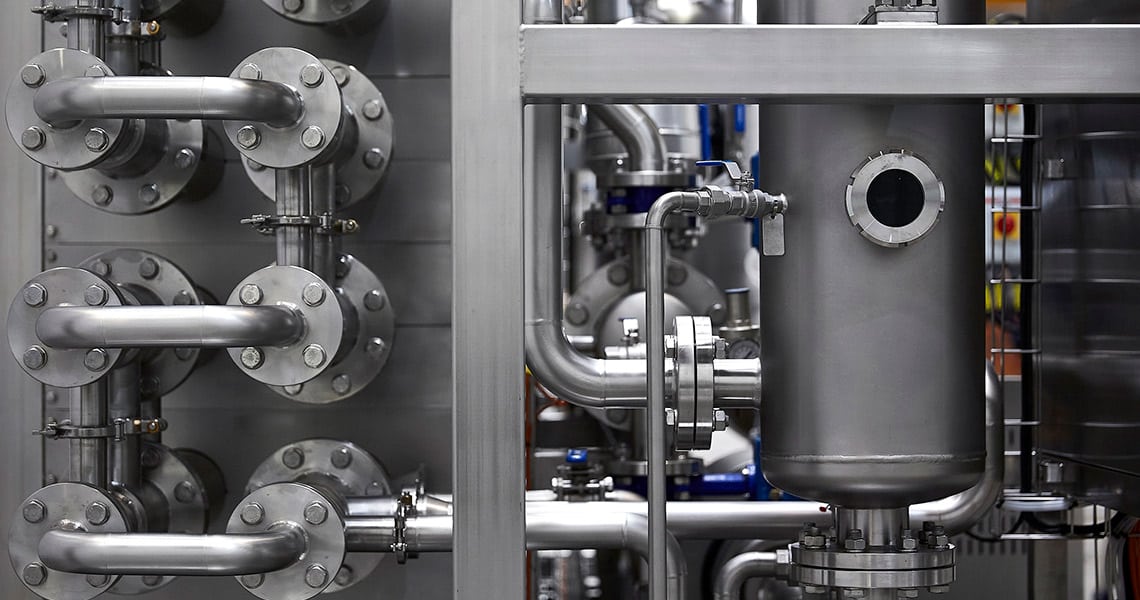Emission reduction in heat exchangers is a critical focus area for industries aiming to meet global sustainability goals and comply with tightening environmental regulations. From power plants to chemical processing, and from HVAC systems to transport engines, heat exchangers play a central role in minimizing energy consumption and reducing harmful emissions like CO₂, NOx, and particulate matter.
With technological advancements such as compact plate heat exchangers, earth-air systems, CuproBraze brazing techniques, and smart AI-based monitoring, industries are now able to recover waste heat more efficiently, reduce fuel usage, and cut operational emissions drastically. These innovations not only improve thermal efficiency but also align with carbon-neutral strategies, making heat exchangers essential tools in the green industrial transformation.
Heat Exchangers in CO₂ Capture Processes
Application: Carbon capture in cement plants, power plants, and chemical facilities.
Technology: Compact Plate Heat Exchangers (PHEs) replace traditional shell-and-tube exchangers.
How it reduces emissions:
- Energy Efficiency: Plate heat exchangers have higher heat transfer coefficients and lower temperature differences (ΔT as low as 4°C). This means less energy is needed to reach the same output.
- Waste Heat Recovery: They recover heat from flue gases or process streams, which can be reused to preheat incoming materials—cutting down fossil fuel use.
- Result: 16–34% savings in CO₂ capture cost, significantly improving economic viability of carbon capture.
Earth-Air Heat Exchangers (EAHX) & Ground-Coupled Systems
Application: HVAC systems in commercial buildings, warehouses, and sustainable architecture.
Technology: Use underground pipes to exchange heat with the earth’s stable temperature (~18–22°C).
How it reduces emissions:
- Zero Active Refrigeration: No compressors needed. Only fans are used to circulate air through underground pipes.
- Year-Round Use: Cools hot air in summer, warms cold air in winter—great for preconditioning fresh air intake in HVAC systems.
- Result: Up to 70% energy savings in air conditioning, indirectly cutting emissions tied to electricity consumption.
Vertical Plate Heat Exchangers for Bulk Solids
Application: Cooling of materials like fertilizer, sugar, cement, sand, and minerals.
Technology: Gravity-flow vertical heat exchangers with indirect contact.
How it reduces emissions:
- No Airflow or Dust Generation: Conventional methods blow air across solids, using high fan power and creating dust. These use fluid (water, glycol) inside plates instead.
- Precision Temperature Control: No risk of over-drying or overheating, improving product quality.
- Result: Up to 90% energy savings, drastically reducing emissions from drying or cooling systems.
CuproBraze Brazed Heat Exchangers
Application: Radiators, intercoolers, and oil coolers in diesel engines, locomotives, gensets, and off-road vehicles.
Technology: Copper-brass components joined by brazing (not soldering), enhancing strength and temperature tolerance.
How it reduces emissions:
- Durability at High Temperatures: Allows more aggressive exhaust gas recirculation (EGR) for NOx control without component failure.
- Better Heat Recovery: Can operate at higher pressures and temperatures without corrosion—recovering more exhaust heat.
- Result: Improves engine thermal efficiency → reduces fuel consumption and emissions per output unit.
Smart Monitoring via Physics-Informed Neural Networks (PINNs)
Application: Digital twins of heat exchanger systems in power plants, process industries, refineries.
Technology: AI trained with both real-time sensor data and physical laws.
How it reduces emissions:
- Predictive Maintenance: Detects fouling or performance drop before it becomes severe, allowing for scheduled, efficient maintenance.
- Optimal Operation: Continuously adjusts operating parameters for best heat transfer.
- Result: Maintains peak heat exchanger efficiency → reduces unnecessary energy consumption, minimizing associated emissions.
Checkerboard Counterflow Heat Exchangers
Application: Heat recovery from hot industrial exhaust (steel plants, glass furnaces, kilns).
Technology: A checkerboard design enhances turbulence and surface area in a compact layout, using counter-current flow.
How it reduces emissions:
- High Heat Recovery Efficiency: Can recover up to 80% of waste heat.
- Reduced Flue Gas Temperature: Lowers exhaust temps before release, sometimes enabling condensation of remaining vapors and further heat extraction.
- Result: Dramatically reduces the need for fresh fuel input in the heating stage → cuts CO₂ and NOx emissions.
Emission Reduction in Heat Exchangers are more than just thermal devices—they are enablers of energy efficiency, carbon capture, and cleaner industrial operations. Whether through waste heat recovery, passive thermal exchange, or digitally optimized performance, modern heat exchanger technologies contribute directly to reducing greenhouse gases and enhancing sustainability.
As industries continue to innovate and transition to low-carbon models, the integration of high-performance, smart, and adaptable heat exchangers will be vital. Investing in these systems not only lowers emissions but also improves ROI through energy savings, regulatory compliance, and long-term operational resilience.

